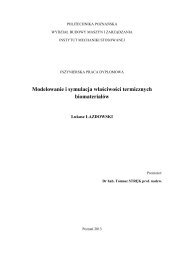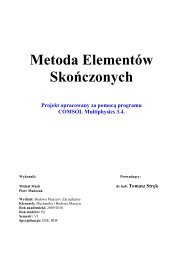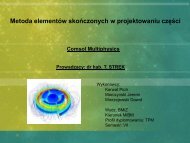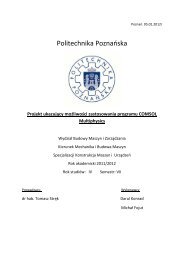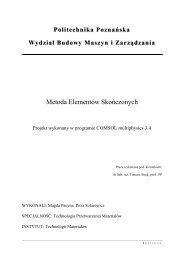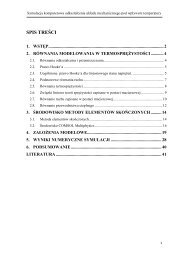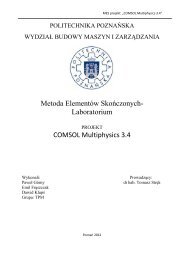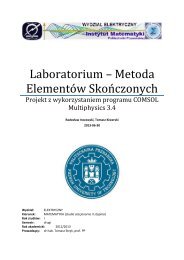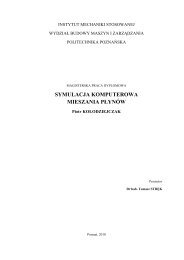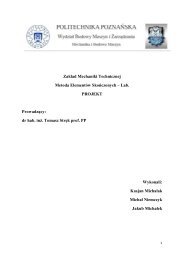Lithium-Ion Battery Simulation for Greener Ford Vehicles
Lithium-Ion Battery Simulation for Greener Ford Vehicles
Lithium-Ion Battery Simulation for Greener Ford Vehicles
Create successful ePaper yourself
Turn your PDF publications into a flip-book with our unique Google optimized e-Paper software.
AEROSPACE<br />
CSEM SA, NEUCHÂTEL, SWITZERLAND<br />
Reduced-Weight Reaction Sphere Makes Way<br />
<strong>for</strong> Extra Satellite Payload<br />
BY LEOPOLDO ROSSINI, EMMANUEL ONILLON, AND OLIVIER CHÉTELAT, CSEM SA, SWITZERLAND, WWW.CSEM.CH<br />
When launching satellites to orbit,<br />
every gram of payload is extremely<br />
valuable. Depending on the orbit and the<br />
launcher, an estimated cost is about 15,000<br />
euros per kilogram. With this in mind,<br />
researchers at CSEM, the Swiss Center<br />
<strong>for</strong> Electronics and Microtechnology, are<br />
working on ways to minimize the weight<br />
of satellite attitude control systems. Here,<br />
a single multi-axis reaction sphere is proposed<br />
to replace four conventional singleaxis<br />
reaction wheels. Its geometry and<br />
electromagnetic design are quite complex,<br />
and only with the help of COMSOL Multiphysics<br />
are they able to examine various<br />
configurations of magnets to find the one<br />
that works best.<br />
Founded in 1984, by grouping three<br />
<strong>for</strong>mer watch-industry research laboratories,<br />
CSEM is today a private applied<br />
research and development center specializing<br />
in microtechnology, system engineering,<br />
microelectronics, and communication<br />
technologies. With headquarters<br />
in Neuchâtel, it has some 400 employees<br />
in Switzerland.<br />
Until Now: Multiple<br />
Reaction Wheels<br />
In conventional 3-axis stabilized spacecrafts,<br />
three reaction wheels are arranged<br />
along the three axes, with a fourth wheel<br />
<strong>for</strong> optimization and redundancy; they<br />
are normally employed to implement attitude<br />
control systems with the required accuracy<br />
and without using fuel to fire jets.<br />
This attitude control allows the satellite<br />
to be pointed towards an object in the sky,<br />
towards a particular location on earth or<br />
to stabilize the satellite by compensating<br />
<strong>for</strong> disturbances it might encounter.<br />
The operating principle is relatively<br />
simple: an electric motor is attached to<br />
a flywheel. If the wheel accelerates, it<br />
builds up angular momentum in a certain<br />
direction, and the spacecraft rotates<br />
in the opposite direction due to the law<br />
of conservation of momentum. Note that<br />
such a device can only rotate a satellite<br />
around its own center of mass and cannot<br />
be used to move the spacecraft to a different<br />
position.<br />
The researchers at CSEM are operating<br />
under the assumption that the work<br />
of three reaction wheels can be done with<br />
one reaction sphere. That device is an iron<br />
ball covered with permanent magnets and<br />
held in position with magnetic levitation<br />
through magnetic fields generated by a<br />
number of electric coils. The sphere, acting<br />
as a rotor, is accelerated about any axis<br />
of rotation with a 3D motor. An attitude<br />
control system based on a reaction sphere<br />
would be smaller and lighter than those<br />
based on reaction wheels; even with its<br />
more complicated control electronics, it is<br />
estimated that the device can significantly<br />
increase the torque in the same volume.<br />
In addition, due to its magnetic bearing,<br />
4 6 // C O M S O L N E W S 2 0 1 1<br />
➮<br />
Cov ToC + – A<br />
➭<br />
46-49 CN CSEM 2011.indd 46 5/16/11 9:33 AM



